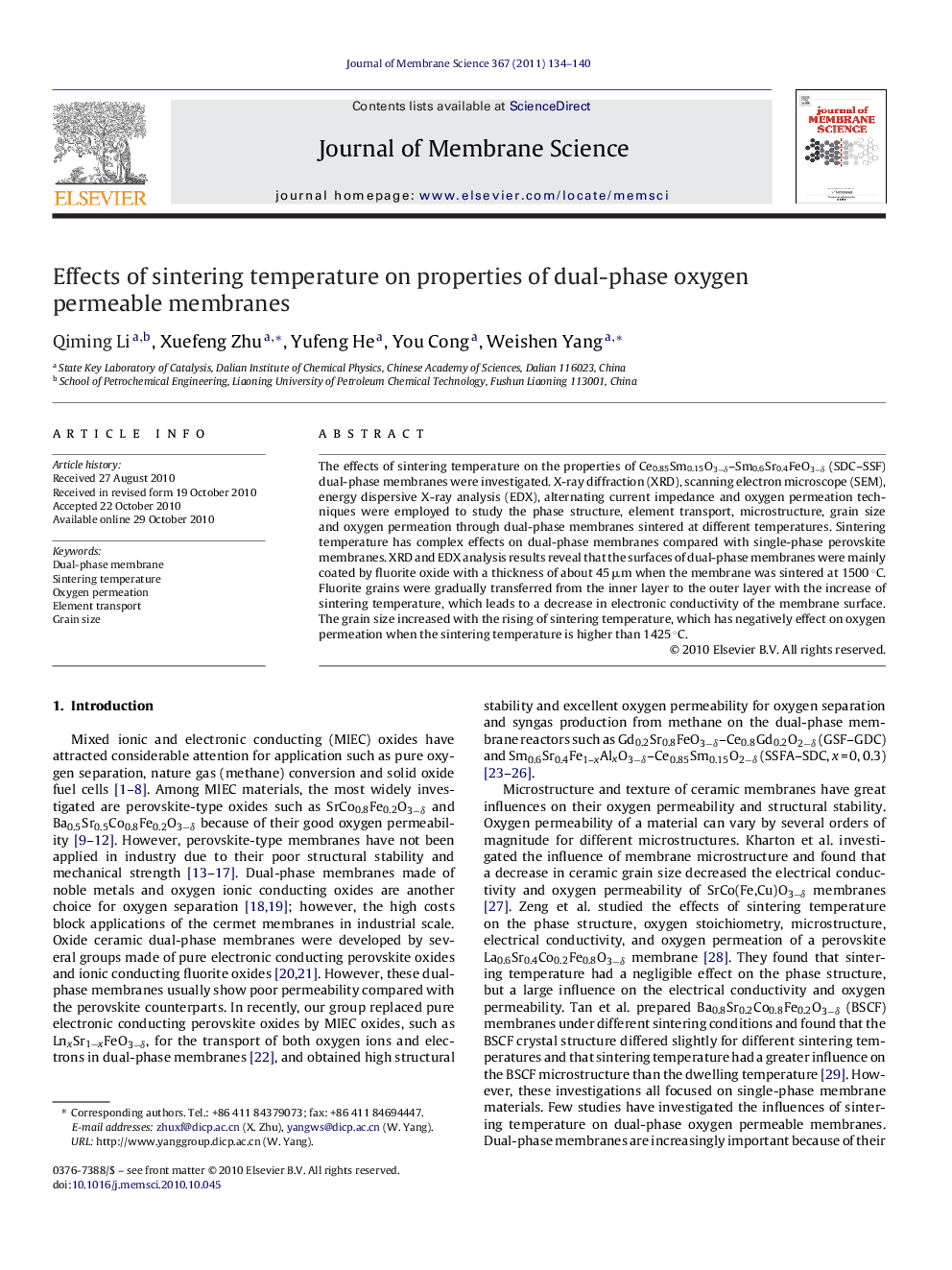| Article ID | Journal | Published Year | Pages | File Type |
|---|---|---|---|---|
| 636022 | Journal of Membrane Science | 2011 | 7 Pages |
The effects of sintering temperature on the properties of Ce0.85Sm0.15O3−δ–Sm0.6Sr0.4FeO3−δ (SDC–SSF) dual-phase membranes were investigated. X-ray diffraction (XRD), scanning electron microscope (SEM), energy dispersive X-ray analysis (EDX), alternating current impedance and oxygen permeation techniques were employed to study the phase structure, element transport, microstructure, grain size and oxygen permeation through dual-phase membranes sintered at different temperatures. Sintering temperature has complex effects on dual-phase membranes compared with single-phase perovskite membranes. XRD and EDX analysis results reveal that the surfaces of dual-phase membranes were mainly coated by fluorite oxide with a thickness of about 45 μm when the membrane was sintered at 1500 °C. Fluorite grains were gradually transferred from the inner layer to the outer layer with the increase of sintering temperature, which leads to a decrease in electronic conductivity of the membrane surface. The grain size increased with the rising of sintering temperature, which has negatively effect on oxygen permeation when the sintering temperature is higher than 1425 °C.
Graphical abstractFigure optionsDownload full-size imageDownload high-quality image (107 K)Download as PowerPoint slideResearch highlights▶ Over high sintering temperature leads to enrichment of fluorite phase on surface. ▶ Enrichment of fluorite phase increases the surface resistances. ▶ Growth of grains decreases the homogeneous of the two phases and permeation fluxes. ▶ The optimal sintering temperature for Ce0.85Sm0.15O3−δ–Sm0.6Sr0.4FeO3−δ is 1425 °C.
